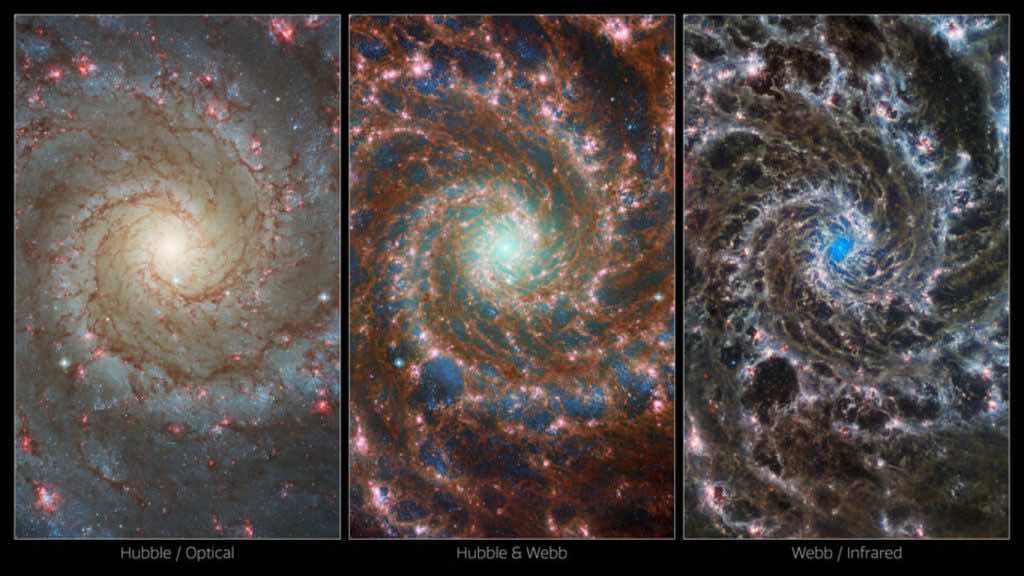The James Webb Space Telescope has just shared images of the mesmerizing spiral M74 Phantom Galaxy. The photos were made public by the European Space Agency.
It is usually not known but the Canadian Space Agency (CSA) and European Space Agency (ESA) are also contributors to the program.
For example, the ESA has contributed to the NIR Spec, and MIRI Instrument, and worked to launch the telescope last year. The ESA’s efforts are being rewarded by guaranteeing at least 15 percent of the JWST observation time, an arrangement that was also followed for the Hubble Space Telescope.
The Phantom Galaxy lies 32 million light years away from the Earth in the constellation Pisces which makes it an easier point to observe.
There are many spiral galaxies besides this one. However, their spirals are quite “patchy and ragged to structures,” ESA wrote on its website. In sharp contrast, the M74’s spiral arms are clear and well-defined, earning it the moniker “grand design spiral.”
The Hubble Space Telescope has also captured the M74 with its sensors that can capture ultraviolet and visible spectrum wavelengths, and so have other observatories such as Atacama Large Millimeter/submillimeter Array, ALMA, which is based on the ground.
The JWST captured the images through its Mid-InfraRed Instrument (MIRI). According to NASA’s page on the JWST, the MIRI encapsulates a wavelength range of 5-28 microns and has a camera. This enables the instrument to capture wide-field, broadband images of distant galaxies, newly forming stars, and comets that are faintly visible too.
Through the instrument, scientists have been able to find delicate filaments of gas and dust that are present in the spiral arms of the galaxy, which go outward from the center of the galaxy.
This new-found information from the JWST will also help astronomers to locate start-forming regions in other galaxies, measure masses and ages of star clusters, and learn more about the dust drifting in space, ESA said on its website.

